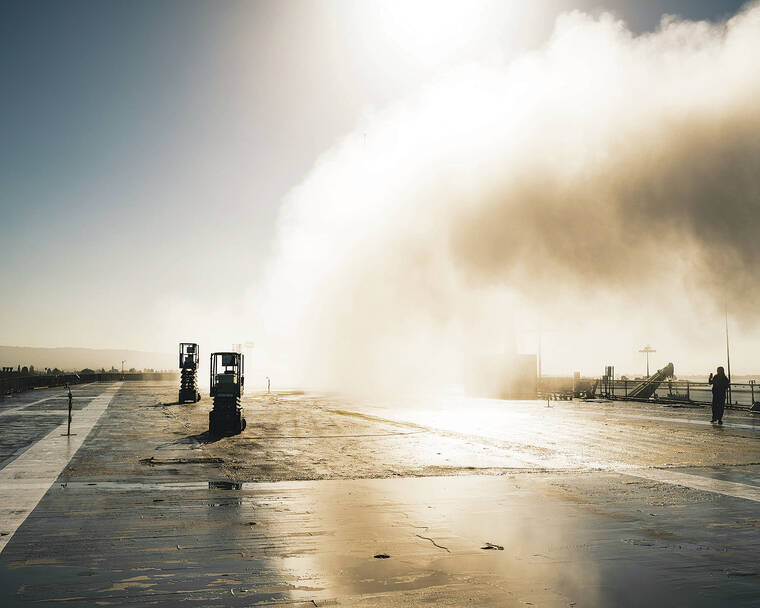Environmental group to study effects of artificially cooling Earth
The Environmental Defense Fund will finance research into technologies that could artificially cool the planet, an idea that until recently was viewed as radical but is quickly gaining attention as global temperatures rise at alarming rates.
The group hopes to start issuing grants this fall, said Lisa Dilling, associate chief scientist at the EDF, who is running the project. She said research would focus on estimating the likely effects in different parts of the world if governments were to deploy artificial cooling technologies.
ADVERTISING
The intent is to help inform policymakers, she said. “We are not in favor, period, of deployment. That’s not our goal here,” Dilling said. “Our goal is information, and solid, well-formulated science.”
The EDF has previously expressed skepticism about techniques such as these. But Dilling says the discussion about ways to cool the planet isn’t going away, regardless of opposition. “This is something that I don’t think we can just ignore,” she said.
The group will fund what is sometimes called solar radiation modification, or solar geoengineering, which involves reflecting more of the sun’s energy back into space. Possible techniques involve injecting aerosols into the stratosphere, or brightening clouds to make them more reflective.
Researchers believe such actions could temporarily reduce global temperatures, until society reduces greenhouse gas emissions by burning far less fossil fuel.
What they don’t know, and are trying to find out, is what other effects these actions could have. For example, would reflecting away more sunlight also change precipitation patterns, or alter ocean circulation patterns that influence life on land and in the sea? And if so, how?
The risk of unintended consequences is only part of what drives opposition. Opponents also say that simply talking about solar geoengineering creates a dangerous impression that quick fixes for climate change are available.
Techniques to artificially cool Earth “offer a bit of false promise, that there are things that you can do that will make it easier to address climate change without really tackling the root causes of it,” said David Santillo, a senior scientist at Greenpeace International. “You’re taking away from focusing on where you can actually make a difference.”
The depth of unease with solar-geoengineering research burst into public view last week in Alameda, California, when elected officials voted to shut down the country’s first outdoor test of a device that could one day be used to artificially cool the planet.
Researchers had built a machine designed to propel tiny sea-salt aerosols into the air and had begun testing it on the deck of a decommissioned aircraft carrier in Alameda. Their goal was to see how those aerosols behave in different atmospheric conditions. The idea is that, in the future, versions of the device might be used to spray particles into clouds, causing them to reflect more sunlight into space to temporarily ease global warming.
Alameda officials ordered the researchers to stop the experiment, citing possible health and environmental risks. The city said it would assess whether the experiment was safe.
The city manager eventually concluded that the experiment didn’t pose a threat, and recommended that the City Council allow it to resume. Nevertheless, on Wednesday, the City Council permanently halted the experiment, overruling city staff members.
Many environmental groups remain skeptical of geoengineering.
“We’re already running a massive chemical experiment on the planet, and now you’re talking about another massive experiment,” said Patrick Drupp, director of climate policy for the Sierra Club, referring to centuries of human activity that has released vast amounts of greenhouse gases like carbon dioxide into the atmosphere. “I’m not sure if that’s the best thing that we should be looking at right now.”
© 2024 The New York Times Company


